Pruning flowering perennials can improve the look and health of your plants and make your garden look much tidier. But while some perennials need to be pruned in spring, others should only be cut back in fall. This can make it tricky to know exactly when you should prune perennials, and many gardeners get a bit of a headache trying to pinpoint exactly when and how to prune the perennial plants in their gardens.
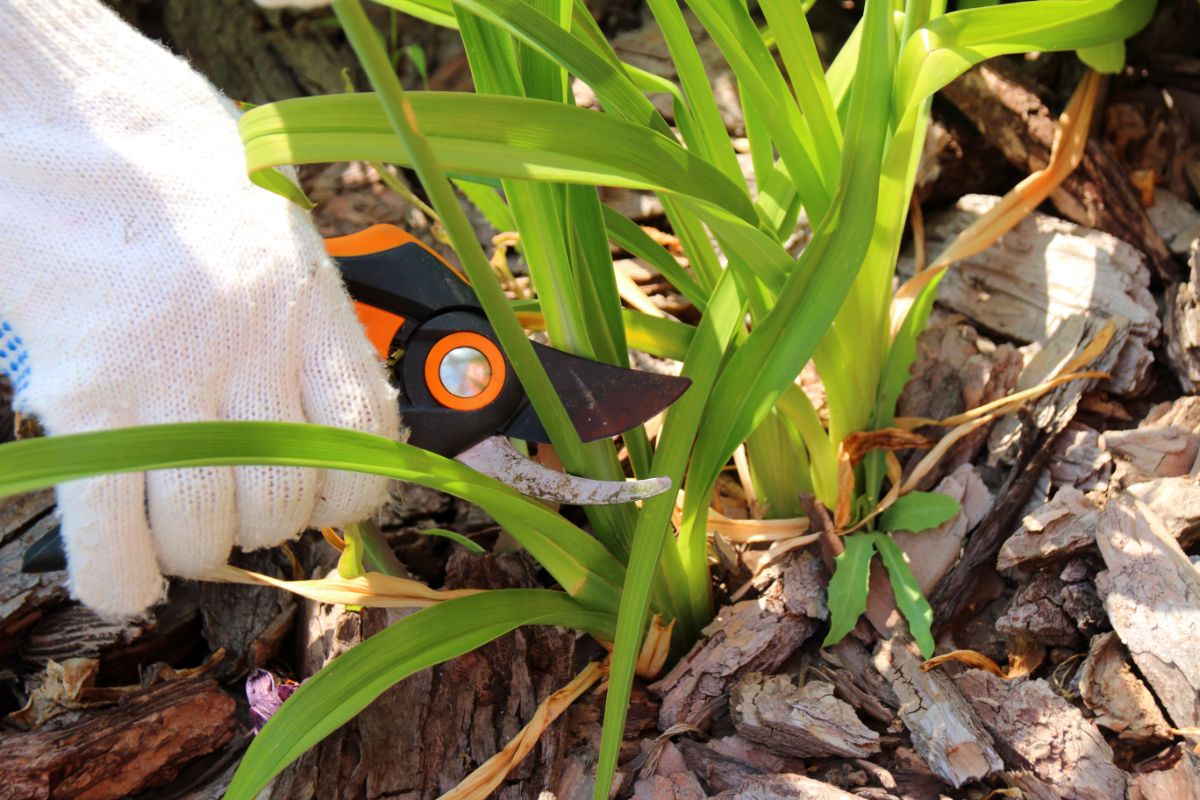
To help you navigate autumn plant care, we’ve compiled this quick guide on the most common perennials that should be cut back in fall. You’ll also find some simple tips on how to prune your plants to maximize their growth and prevent issues like mildew!
Jump to:
- 15 perennials to cut back in fall
- 1. Bearded irises (Iris × germanica)
- 2. Daylilies (Hemerocallis spp.)
- 3. Other lilies (Lilium spp.)
- 4. Peonies (Paeonia lactiflora)
- 5. Tall phlox (Phlox paniculata)
- 6. Bee balm (Monarda spp.)
- 7. Lavender (Lavandula spp.)
- 8. Yarrow (Achillea millefolium)
- 9. Catmint (Nepeta spp.)
- 10. Salvia (Salvia spp.)
- 11. Hostas (Hosta spp.)
- 12. Hollyhocks (Alcea rosea)
- 13. Bronze fennel (Foeniculum vulgare)
- 14. Liatris (Liatris spp.)
- 15. Columbine (Aquilegia vulgaris)
- Frequently asked questions
- Summary
15 perennials to cut back in fall
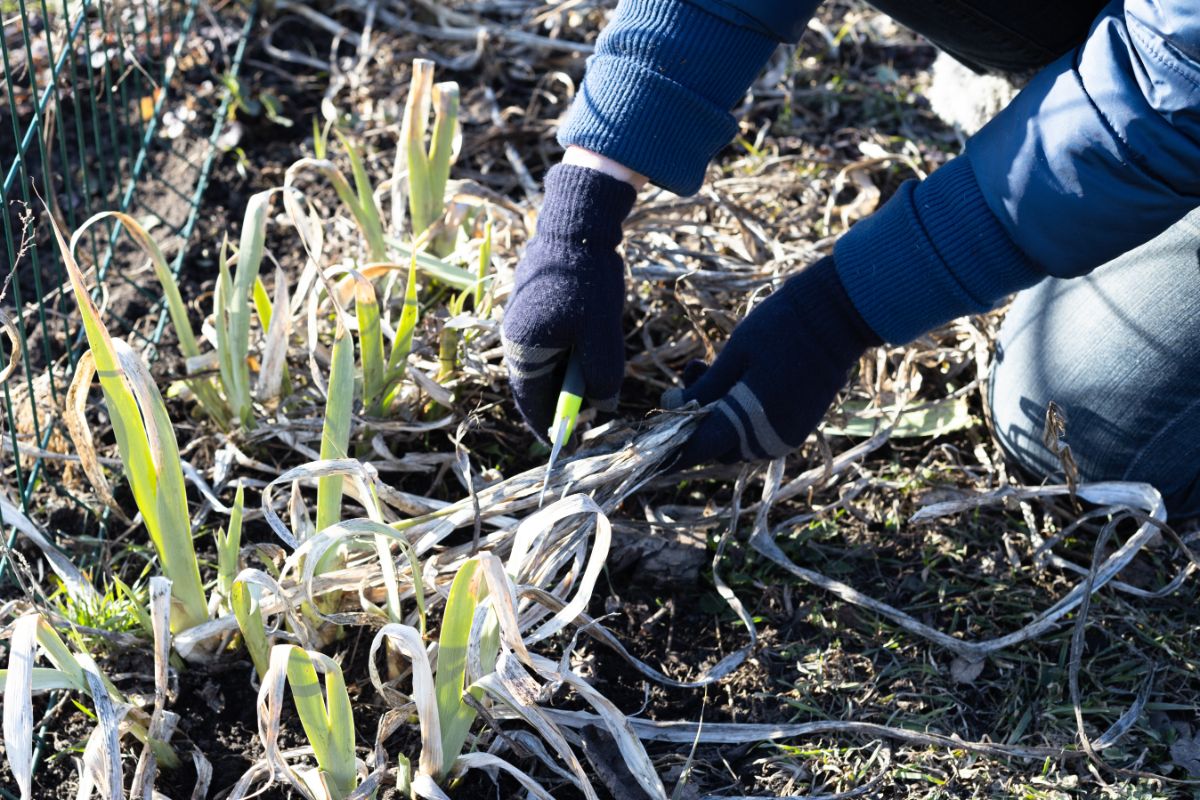
Pruning perennials in fall can offer a lot of benefits, including improved growth and better disease resistance. But if you prune the wrong plants in autumn, you can snip away flower buds and make plants less likely to flower the following year! A poorly timed pruning can also make plants more susceptible to winter damage, and it can stunt or even kill your favorite perennials.
With stakes like that, it’s definitely worth your while to know when plants should and should not be cut back. Below you’ll find the plants that should be pruned in autumn, but if you’re looking for plants that will benefit from springtime pruning, we have a full guide on that as well!
1. Bearded irises (Iris × germanica)
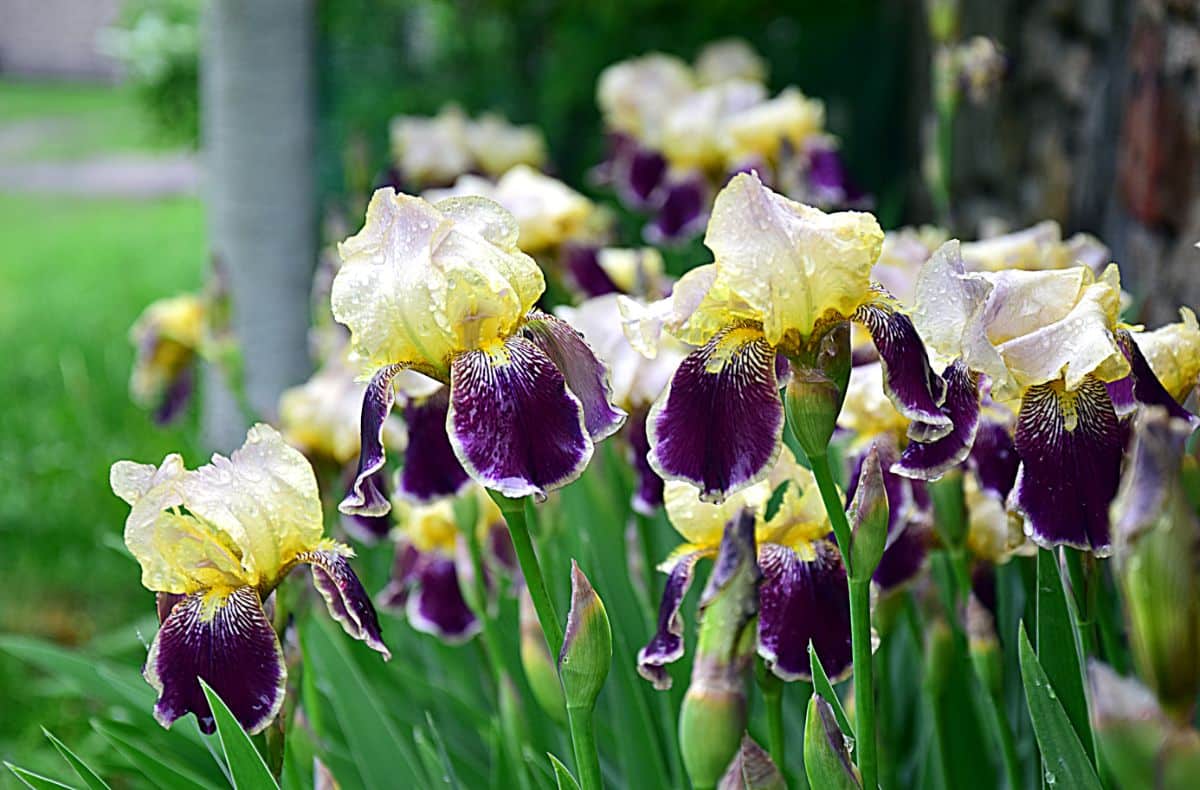
Irises are popular landscaping plants that are mostly grown for their showy summertime blooms. But when iris flowers begin to fade, many gardeners cut back their irises to clean up their garden beds. However, cutting back irises immediately after flowering isn’t ideal, and it can actually cause your irises to produce fewer flowers the following year.
Pruning an iris back too early in the year can reduce your plant’s ability to photosynthesize and limit its access to the energy it needs for future flowering. That’s why you’ll usually get better results if you wait until fall to cut back irises. Ideally, the best time to do this is after your first frost when iris leaves begin to naturally wither and die away.
Generally, the best way to prune irises is to cut their leaves back in a fan-shaped form, following the natural lines of the plant. This will create a more organic look, but you should leave at least 6 to 8” of leaves above the crown of your plant when pruning. Beyond aesthetics, pruning irises back in fall can also reduce the chances that iris borers will overwinter in your garden.
2. Daylilies (Hemerocallis spp.)
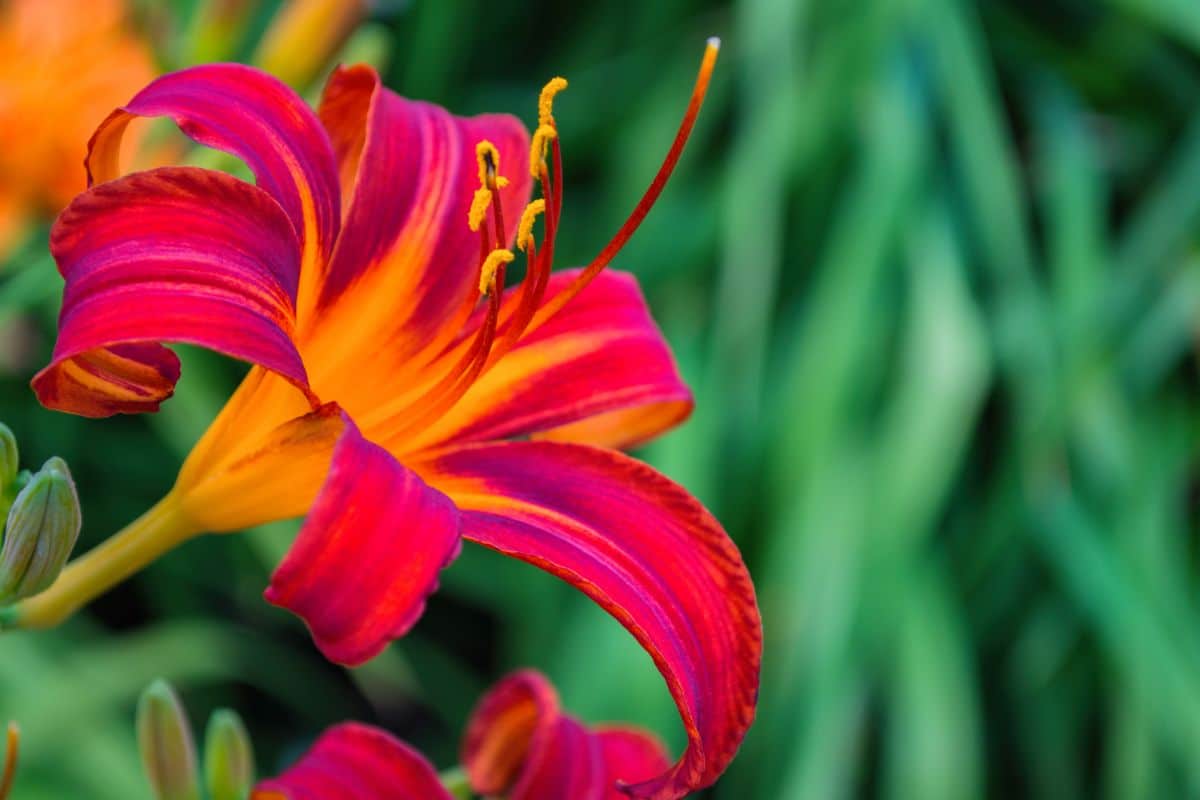
Like irises, daylilies begin to die back after the frosts of fall, which is the perfect time to prune away dead foliage. Daylilies can bloom throughout summer and into early fall, and some gardeners may choose to cut back their daylilies earlier in the season; however, it’s usually best to wait until the plant naturally dies back to do heavier pruning. Cutting back daylilies too early in the year can reduce their ability to photosynthesize.
After frost, daylily leaves naturally turn yellow, and they can become mushy. This makes them very easy to pull out with your hands, but you can also snip daylily stems back with pruners. The best way to cut back daylilies is to clip the leaves back about 4 to 6” above the ground.
Pruning daylilies in autumn is a good way to improve the look of your garden, but it also has practical benefits. Daylilies need to be divided every few years, and this is much easier to do if you cut back the foliage in fall. When spring arrives, you’ll be able to access your lily plants, which will make plant division that much easier!
3. Other lilies (Lilium spp.)
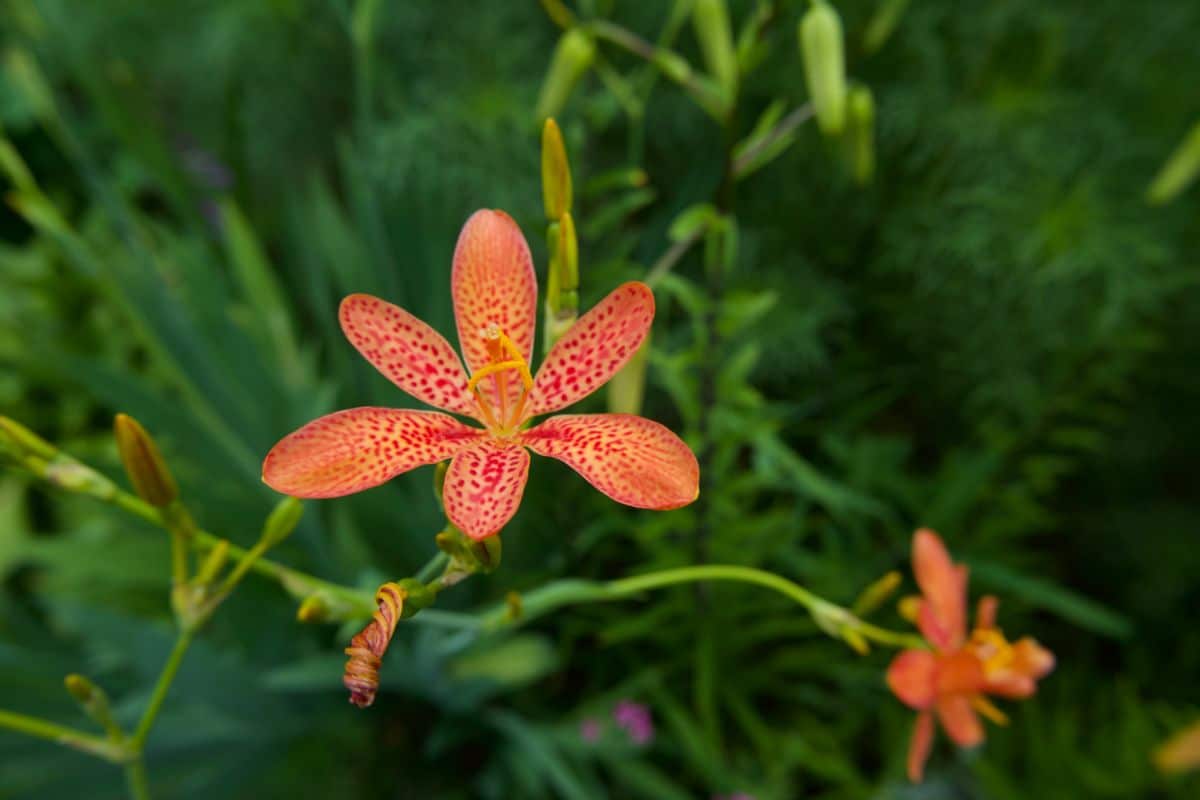
White daylilies aren’t true lilies; these two plant varieties have very similar growing needs. So if you happen to have true lilies in your garden, they should be cut back in fall, just like daylilies. For best results, wait until after frost arrives and your lilies naturally begin to die back.
As they grow and photosynthesize, lilies store energy in their bulbs, which they need to grow in spring and produce more flowers. Cutting back lilies too early in the year can inhibit this process and reduce next year’s blooms. But, if you prune lilies in fall, you’ll give your plants plenty of time to store energy, and pruning spent foliage also prevents diseases and pests from overwintering.
4. Peonies (Paeonia lactiflora)
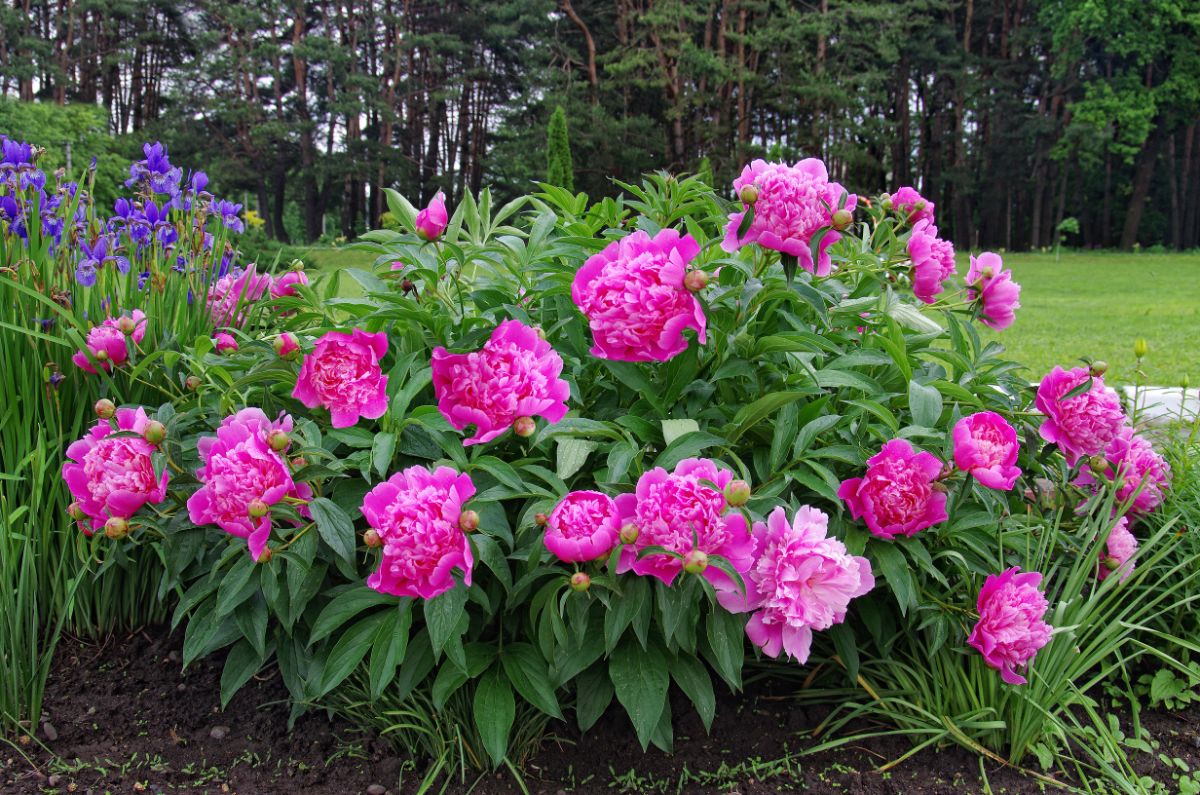
Peonies are traditional cottage garden plants, and they’re often grown in cutting gardens too. But as pretty as peonies are, they are often vulnerable to issues like powdery mildew, which can overwinter in garden beds and spread to nearby plants. Luckily, a good garden cleanup can prevent this from happening, and it can keep your peonies growing strong as well.
If your peonies have visible powdery mildew, you’ll want to remove the affected foliage as soon as you can. Otherwise, wait until after frost arrives to cut back your peony plants. Use pruners and clip back your peony stems about 3” above the soil line.
Pruning peonies back in fall will reduce the chances that mildew and other issues like botrytis will reoccur in your garden. Beyond that, cutting your plants back in autumn will also simplify your spring gardening maintenance checklist, and it will make it so much easier to spread fresh mulch as well!
5. Tall phlox (Phlox paniculata)
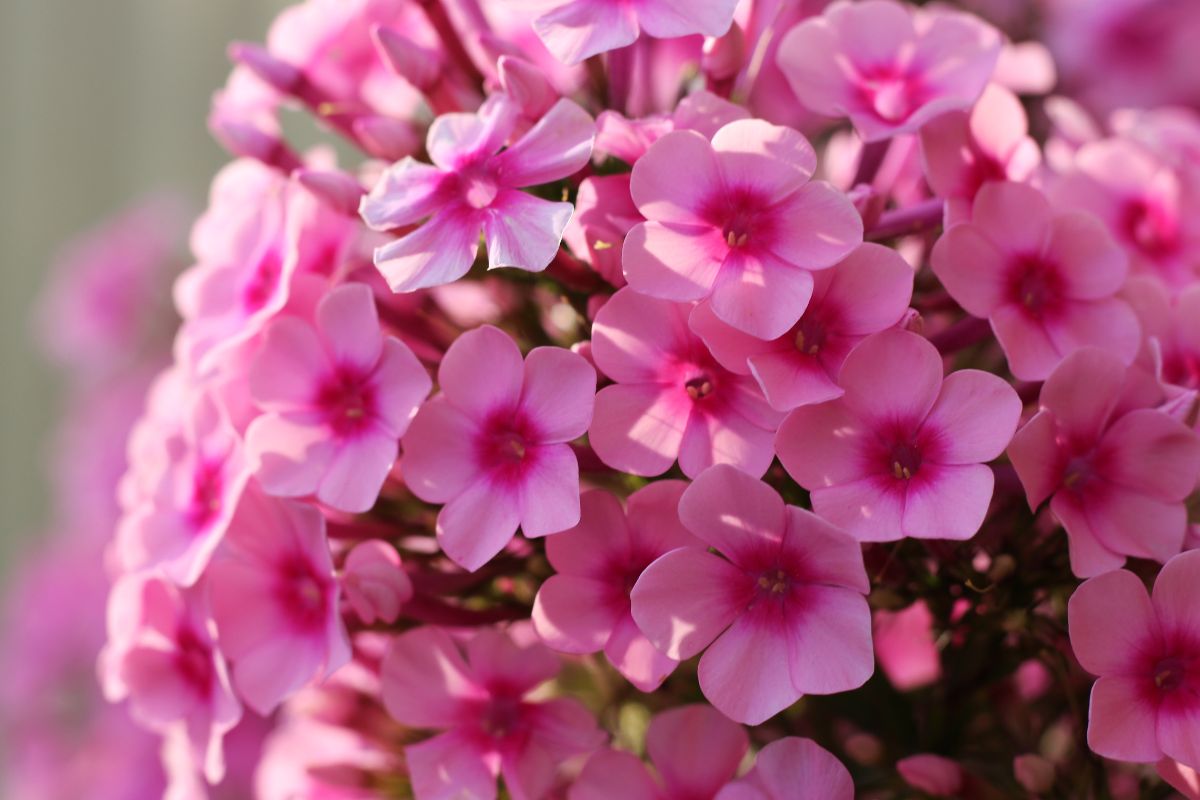
Phlox is another plant that often succumbs to powdery mildew, but cutting back your plants in autumn can prevent mildew issues from reemerging in spring. Just keep in mind that if your plants suffered from mildew issues, you should not compost the affected plant material, as there’s a good chance that mildew spores will survive the composting process. Instead, mildewed plant leaves should be burned or bagged and thrown in the trash.
To prune phlox, wait until the plant dies back in fall and then clip the stems to about 3” above the soil line. This is the best way to handle tall phlox, but creeping phlox usually doesn’t need to be pruned back at all. Unlike tall phlox, creeping phlox is a springtime bloomer, and it’s not particularly susceptible to mildew issues.
6. Bee balm (Monarda spp.)
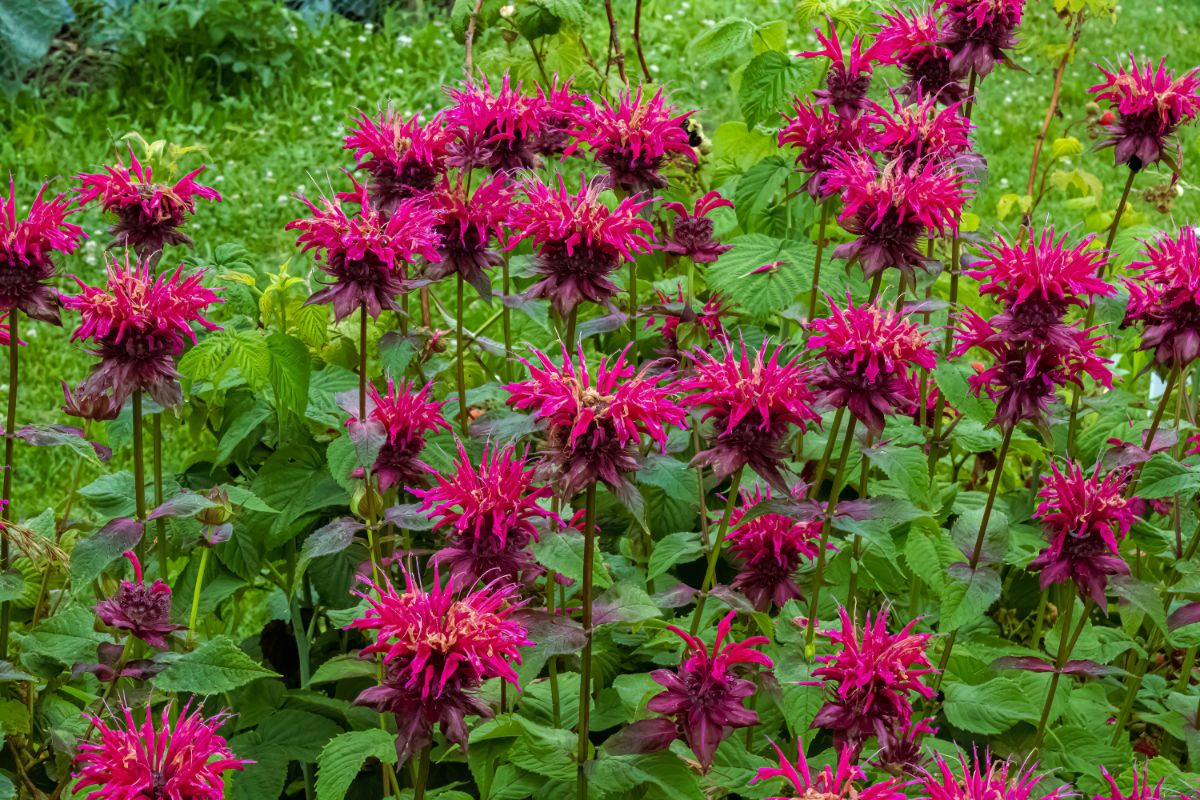
Bee balm is a fantastic pollinator plant that’s frequented by bees, hummingbirds, and butterflies. But after bee balm’s flowers fade, the plant produces prolific seed heads, which can spread bee balm plants all over the place. If you don’t want your bee balm to go wild, clipping back your flower heads before they self-seed is recommended; however, some gardeners leave bee balm flowers in place all winter as their seeds are a favorite treat for goldfinches and other birds.
Whether you prune bee balm or not is up to you, but it can be a particularly good idea to cut back old bee balm plants in fall if your plants suffered from powdery mildew. As with peonies and phlox, mildew can overwinter on bee balm stems and emerge again in spring. However, if you clipped back your bee balm about 3 to 5” above the soil line in fall, this is much less likely to occur.
7. Lavender (Lavandula spp.)
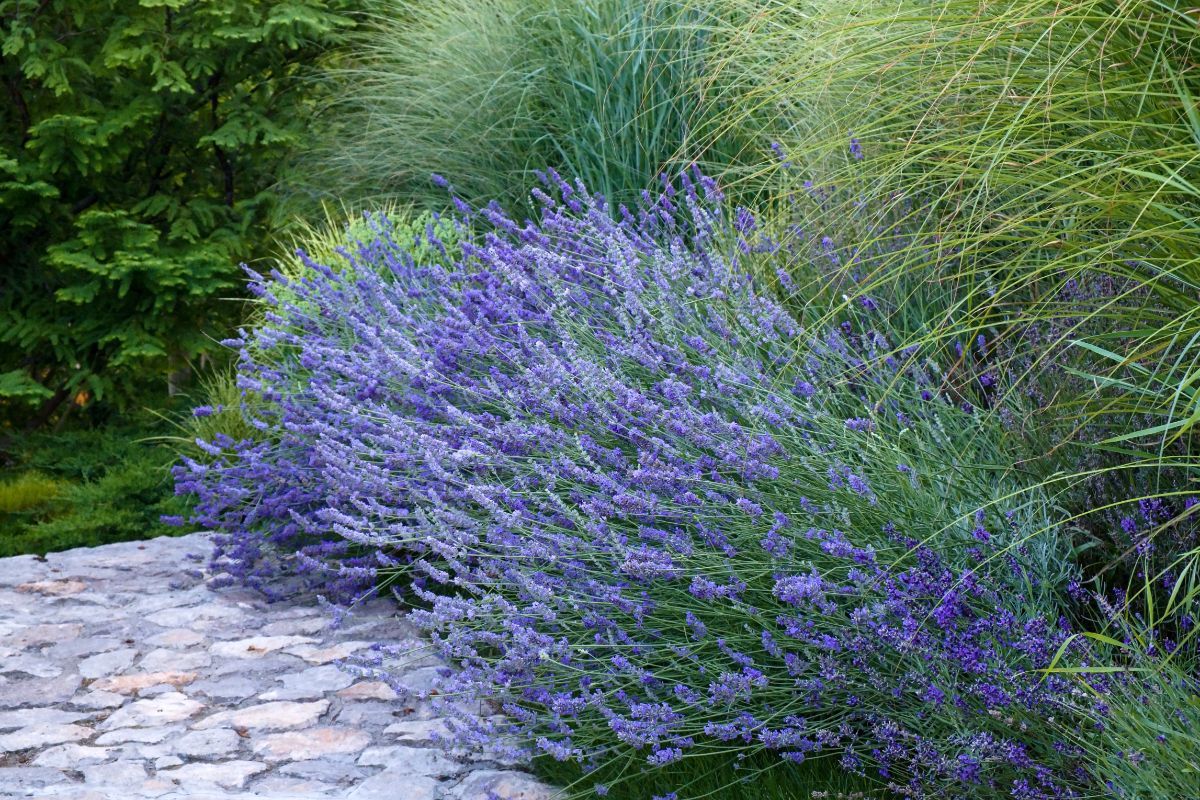
Lavender can be a tricky plant to prune since over pruning lavender can severely damage or even kill your plant. Lavender only produces leaves and flowers on new growth, but if you cut lavender back into the woody sections, it may stop growing entirely! Generally speaking, lavender can be pruned in either spring or fall, but it’s usually easier to do it in autumn as you’re less likely to over prune your lavender plants at this time of the year.
If your lavender drops its leaves in winter, it can be very difficult to tell where the plant’s new and old growth starts during spring pruning. But if you cut back your lavender in fall, it’s much clearer where the woody section of the plant is.
To prune lavender, cut your plants back and shape them with pruners, but never cut stems shorter than 2 to 3” above where the woody section of the plant begins. It’s also recommended to prune lavender no later than 6 weeks before your first frost date, as late pruning can make your plants more susceptible to winter damage.
8. Yarrow (Achillea millefolium)

Yarrow doesn’t strictly need to be pruned in autumn, but cutting your plants back late in the season can improve the look of your garden and tidy up the lines of your beds. Just prune away the old, spent foliage of your yarrow plants, but don’t get too carried away.
Yarrow begins to produce new basal leaves in autumn, which it will need for next year’s growth. For this reason, always be careful when cutting back yarrow and never interfere with the plant’s new leaves so your plant can regrow in spring. An added benefit of pruning yarrow in autumn is that yarrow’s spent flowerheads make fantastic additions to dried floral arrangements!
9. Catmint (Nepeta spp.)
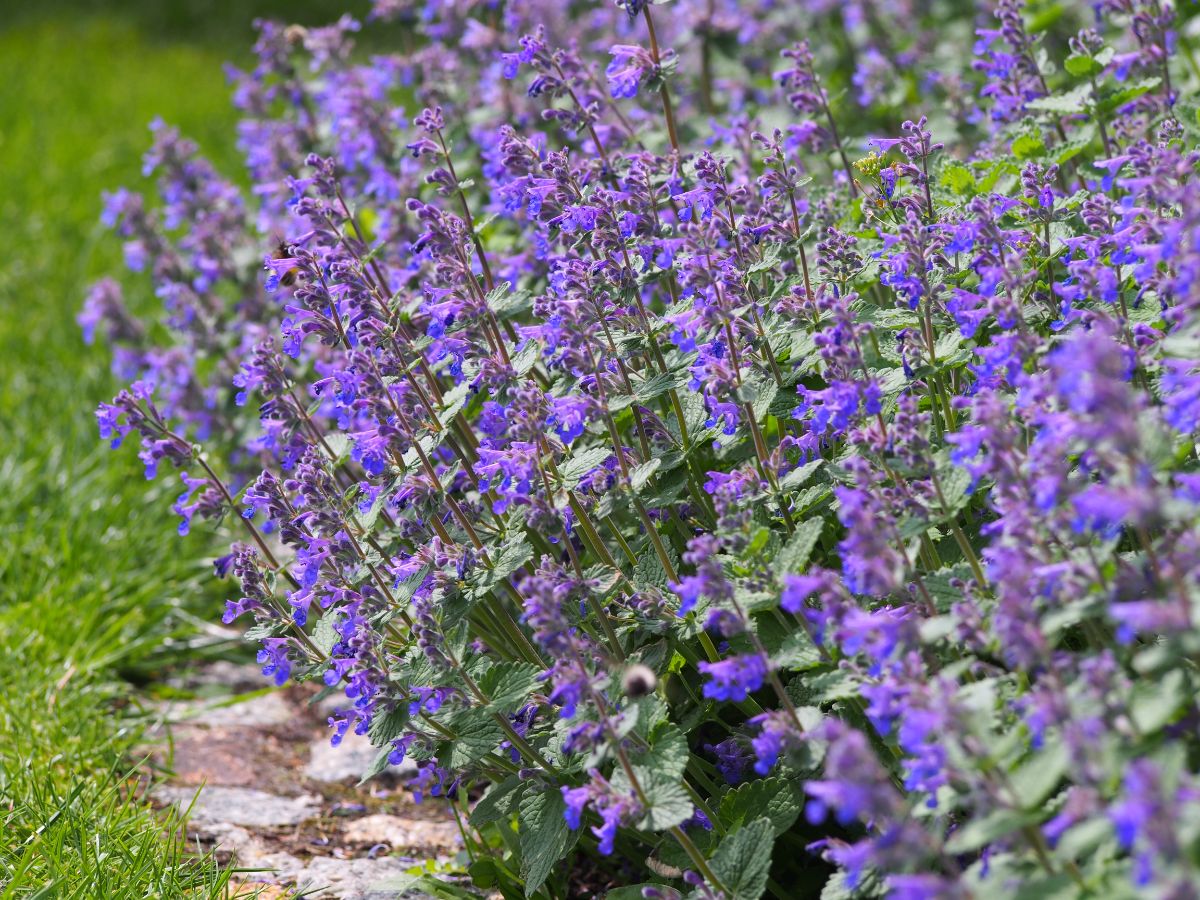
Catmint is a stunning plant in late spring to summer when it flushes with its vivid purple flowers. But come fall, catmint can tend to look a bit scraggly, and its browning leaves and stems can be an eyesore. Catmint plants also have a tendency to flop over as they grow, which will make your garden look rather unruly by the end of the growing season.
While you may want to leave your catmint in place all winter, if you decide to cut back your plants, fall is the time to do it. Cut back catmint stems about 4 to 6” above the soil line, but don’t cut your plants down further than that. Pruning too low can expose catmint crowns to winter damage, and catmint also sprouts leaves for next year’s growth in autumn, which you won’t want to interfere with.
10. Salvia (Salvia spp.)
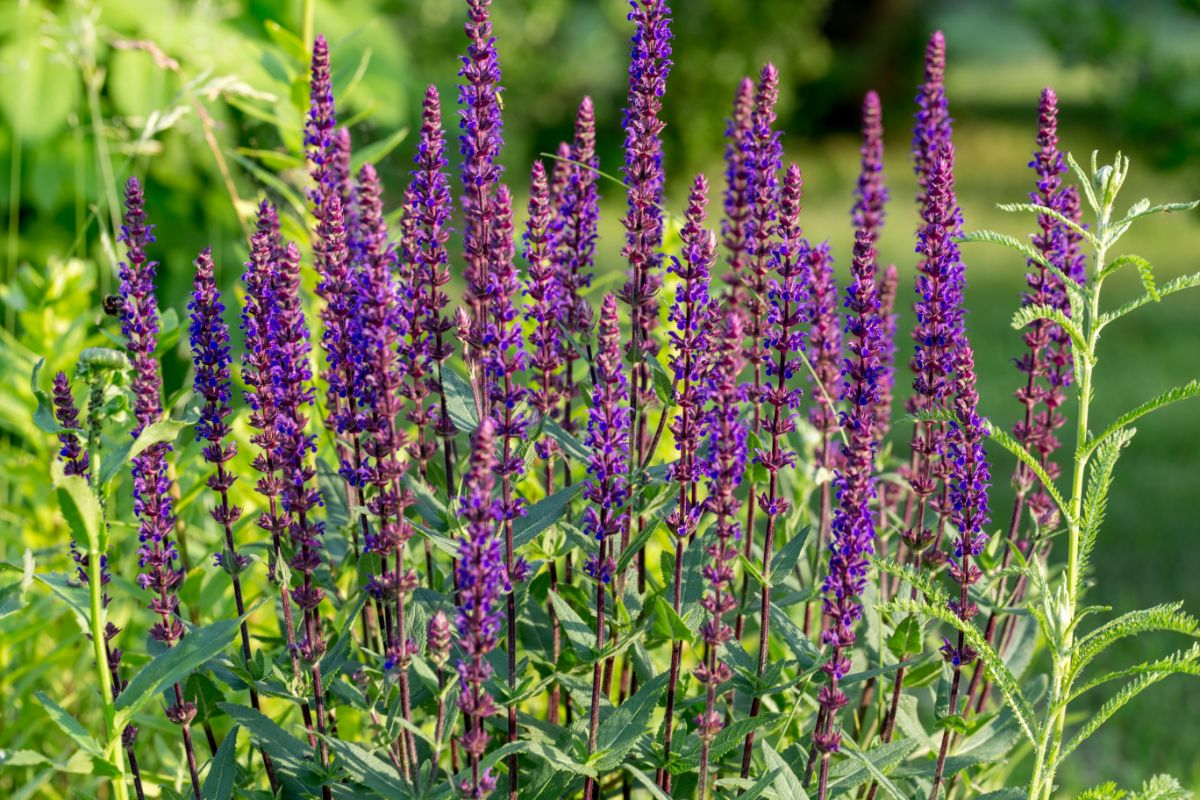
Salvia is an easygoing plant that can thrive in a range of garden conditions, and it’s also a hit with pollinators. But when salvia plants begin to fade at the end of the season, they may need a bit of sprucing up. Cutting plants back in fall can keep your garden looking cleaner during the winter months, and it will also simplify your spring garden prep.
When cutting back salvia in autumn, clip back plant stems above the plant’s new basal growth. As with yarrow and catmint, salvia can start producing next year’s growth in autumn, and over pruning your plants can inhibit their growth. If your salvia plants didn’t suffer from diseases or pests, you can compost your old plant matter with both hot and cold composting methods.
11. Hostas (Hosta spp.)

Hostas are favorites in shade gardens, and they also make easygoing groundcovers. But while hostas are generally pretty low-maintenance plants, they are often plagued by one particular garden pest: slugs! Slugs and snails can riddle hosta leaves with holes and leave slimy trails behind, but even worse, these slippery pests are more than happy to lay their eggs on hosta leaves in autumn!
Cutting back hostas in fall is one simple way to reduce slug and snail populations without chemical pesticides. Simply wait until your plants begin to brown or the first hard frost arrives, and then clip your hostas back about 4 to 6” above the plants’ crowns. Hosta leaves can be composted as long as you don’t see any evidence of slug eggs.
12. Hollyhocks (Alcea rosea)
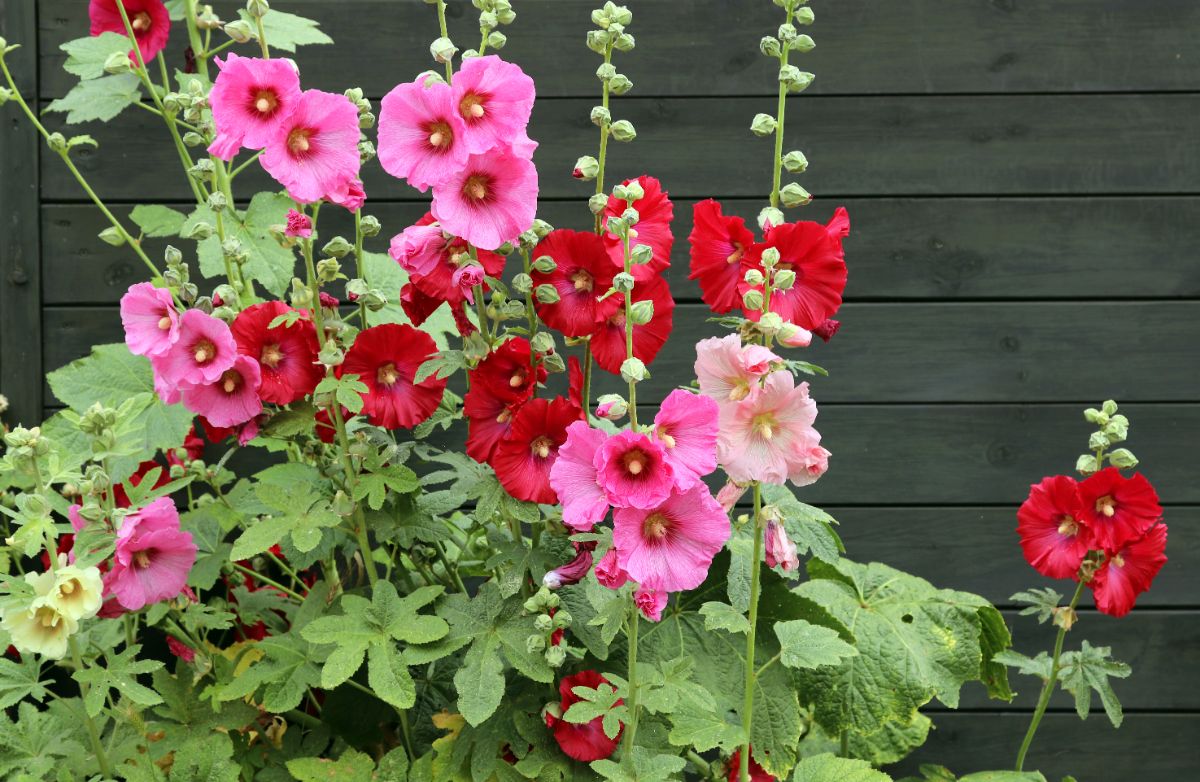
Hollyhocks are staples in summer gardens, prized for their oversized blooms and low maintenance needs. But if you want to get more flowers out of your hollyhocks, deadheading spent blooms can encourage your plants to bloom again by redirecting your plant’s energy towards flower development. Later in the season, you can also cut back hollyhock flower stalks to streamline your garden beds and keep everything looking pristine.
Cutting back hollyhocks is often an optional gardening chore, but one reason you’ll definitely want to pick up your pruning shears is if your hollyhocks suffer from rust. Hollyhock rust usually develops on the undersides of plant leaves, and it creates a warty appearance with brown or yellow bumps all over your plant. But you can combat this fungal issue by removing and destroying affected foliage in autumn.
Some gardeners don’t realize that hollyhocks are actually biennial plants that usually don’t flower or produce seeds until their second year. So, if you want more hollyhocks, don’t cut back your hollyhock flower stalks until after the plant goes to seed. Conversely, if you don’t want more hollyhocks, remove spent flowers before they have a chance to self-sow.
13. Bronze fennel (Foeniculum vulgare)
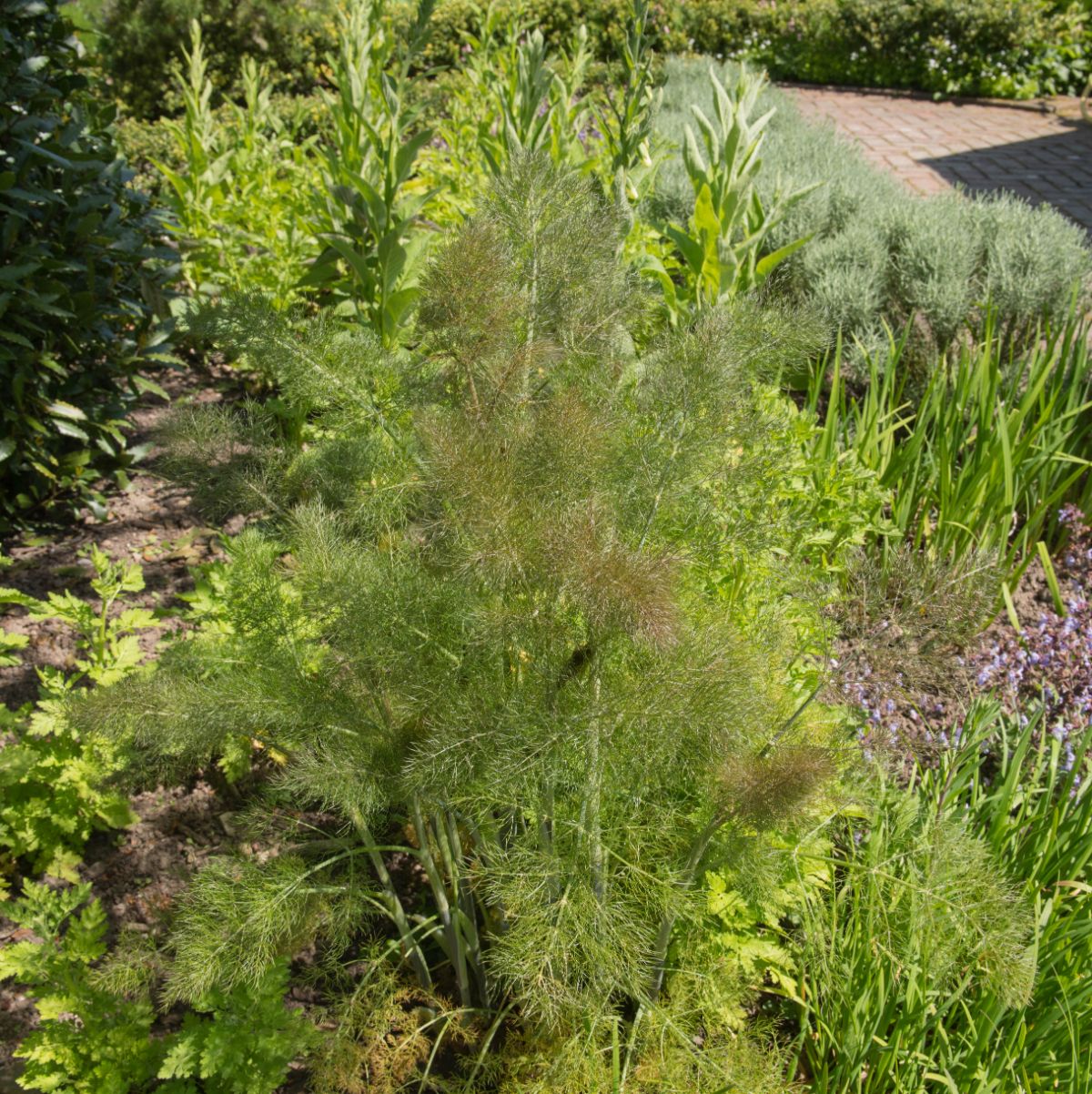
Bronze fennel is a bewitching plant with feathery leaves that add an airy quality to garden beds. Another pollinator favorite, bronze fennel, is a host plant for swallowtail butterflies, which feed on the plant’s leaves and can strip them down to nubs. If swallowtails have damaged your fennel leaves, they aren’t much use to the plant itself, and they can be cut down low to the ground to improve the look of your fennel.
Even if swallowtails haven’t been feasting on your fennel, fennel leaves can become mushy after frost and create a real garden mess. For this reason, it’s usually a good idea to prune away fennel leaves towards the end of the season. While fennel plants have allelopathic qualities, you can still compost plant debris from fennel as long as the plant material isn’t diseased.
14. Liatris (Liatris spp.)

Liatris is a popular pollinator plant, but it also makes a statement in ornamental gardens with its curious, columnar flowers. Liatris plants also have grass-like leaves that can add texture to garden beds and gentle movement when the wind blows. But, towards the end of the season, liatris plants start to fade, and they can look rather unkempt in garden beds over the winter.
Some gardeners cut back liatris plants after they stop flowering, but waiting until fall is an even better idea as it will give your plants more time to store energy for next year’s growth. To cut back liatris, simply gather up the plant’s leaves and flower stems in one hand and snip them down close to the ground with pruners. Come spring, your liatris plants will be ready to regrow, and they won’t need any extra spring maintenance either!
15. Columbine (Aquilegia vulgaris)
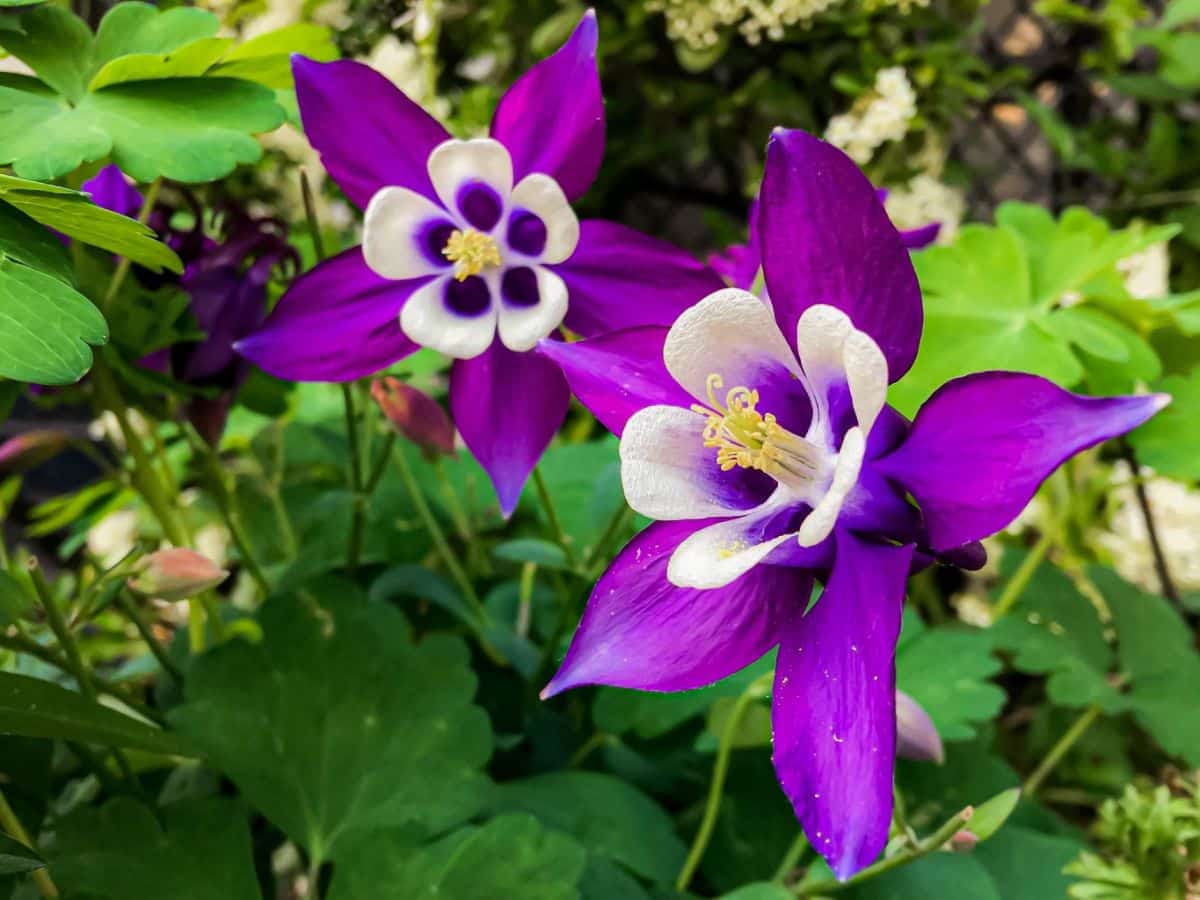
Columbine is a favorite in spring gardens, and its multicolored flowers are always a magnet for butterflies, hummingbirds, and other wildlife. But after those flowers fade, columbines can look a bit ragged, which is why some gardeners prune their columbines back after flowering. However, if you want your columbines to go to seed, you can wait until fall to cut your columbine plants back.
Cutting columbines down in autumn can prevent pests like leaf miners from overwintering, and it can clean up the look of your garden too. Because columbine flowers early in the year, removing spent foliage is particularly beneficial as your plant will have less debris to push through when spring arrives. That said, if you want your patch of columbines to spread naturally, make sure you don’t prune your plants back so early that you prevent self-sowing!
Frequently asked questions
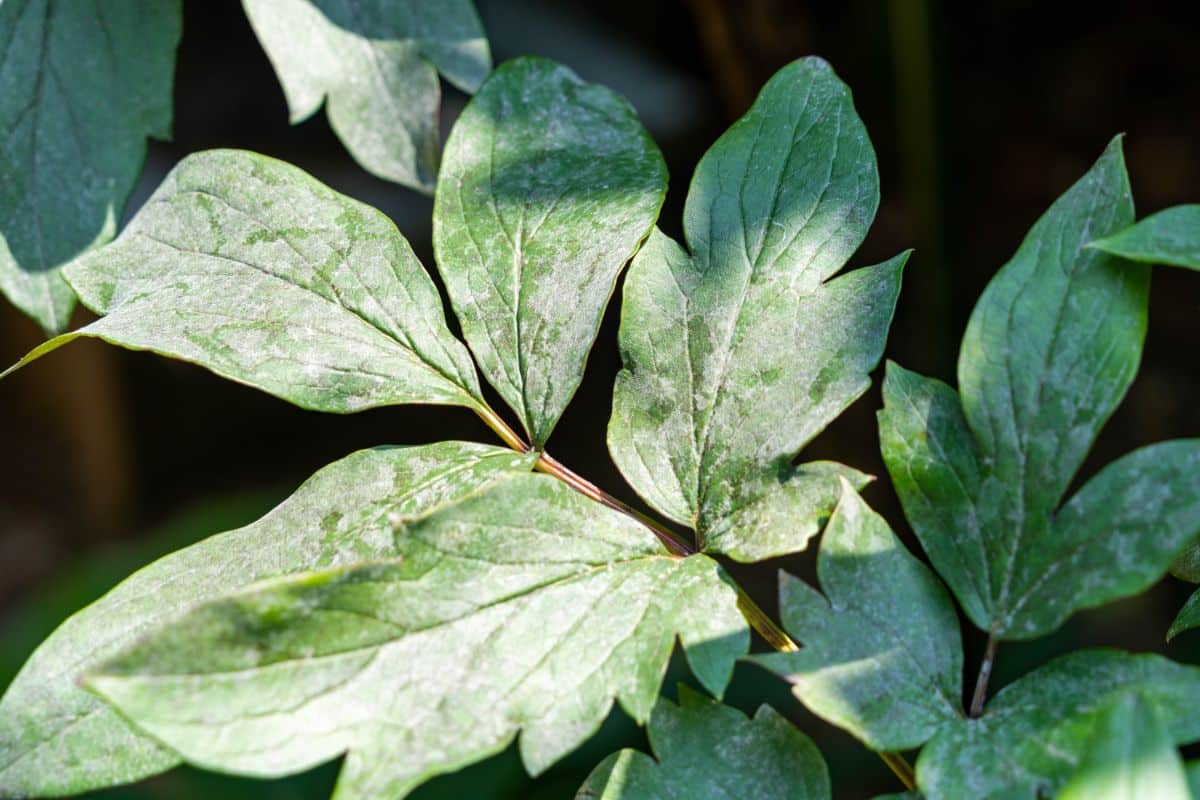
Some perennials, like hostas and lilies, will benefit from fall pruning, which will rejuvenate their growth and prevent diseases from overwintering. Other perennials don’t need to be pruned in fall, although they can benefit from other late-season maintenance practices. Mulching and adding winter protection to tender perennials can shield your plants against winter damage and ensure they come back strong next year.
That depends a lot on when plants flower, as some perennials benefit from spring pruning while other perennials should only be cut back in fall. For perennials that are pruned in fall, it’s usually best to wait until after frost arrives and your plants begin to die back naturally. However, some perennials like lavender should be pruned early in fall, at least 6 weeks before frost is expected, as late pruning can leave these plants susceptible to winter damage.
No. Some perennials, like asters, coneflowers, and Russian sage, should only be pruned in spring. Pruning these plants in autumn can make them more prone to winter damage, or it can snip away valuable seed heads that wild birds feed from during winter.
Before pruning, always do your research and double-check that the plants you want to prune actually should be cut back in fall! It’s also important to always disinfect your pruners in between plants as mildew, and other plant diseases can be easily spread between plants during the pruning process.
Isopropyl alcohol is the best disinfectant for cleaning pruning shears since it works very fast and disinfects tools in just 10 to 30 seconds. Some gardeners prefer to use a 10% bleach solution to disinfect gardening tools; however, tools will need to be soaked in bleach for at least 10 to 30 minutes for disinfection.
That depends. Deadheading perennials can encourage your plants to produce more flowers, and it makes your garden look tidier. Conversely, if you don’t deadhead perennials, your plants can go to seed, which means you’ll get more free perennials for your garden, and wildlife will also have more delicious seeds to feast on in winter!
Summary
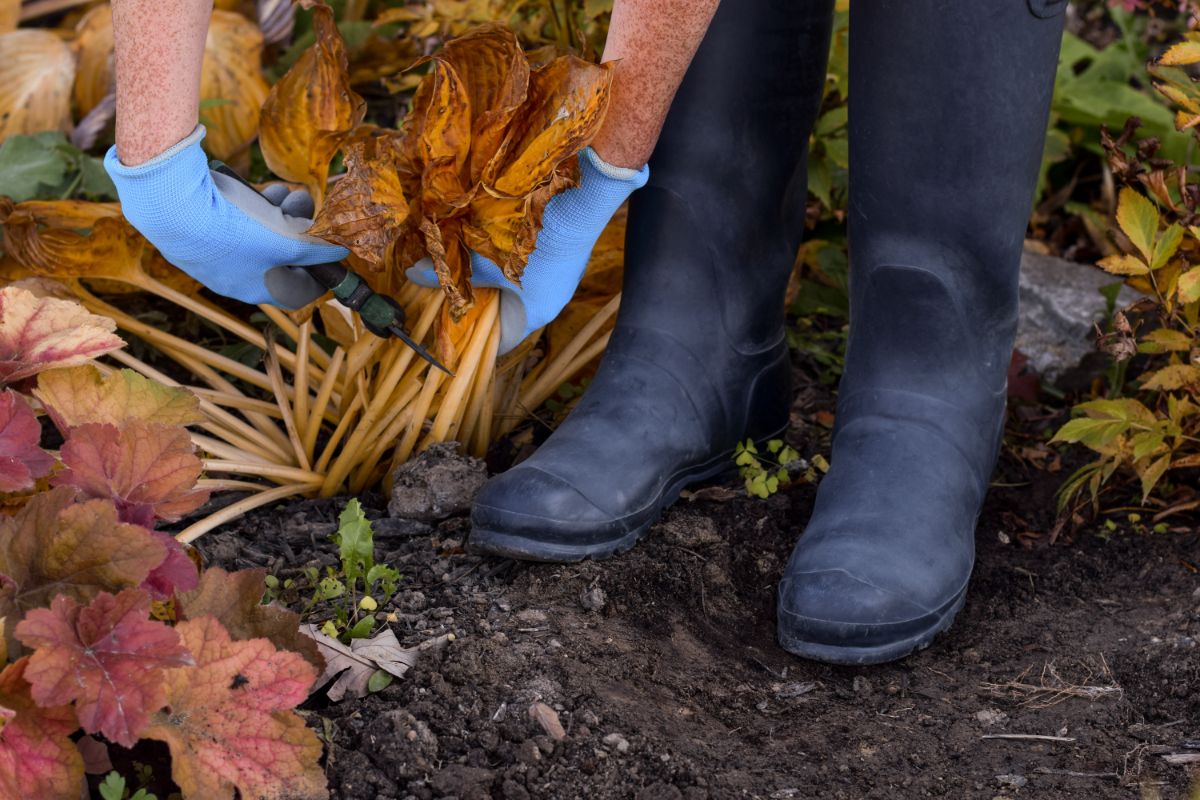
Pruning can feel like an overwhelming task when you’re just starting out with your first garden. With so many plants with different care needs, knowing which plants need spring or autumn pruning can be difficult to keep track of. But with this simple guide and the basic pruning tips we’ve covered today, you’re already well on your way to mastering the art of pruning!
If you’re worried about making a pruning blunder, peruse our guide on the most common pruning mistakes to avoid to ensure that your first foray into pruning is a success!


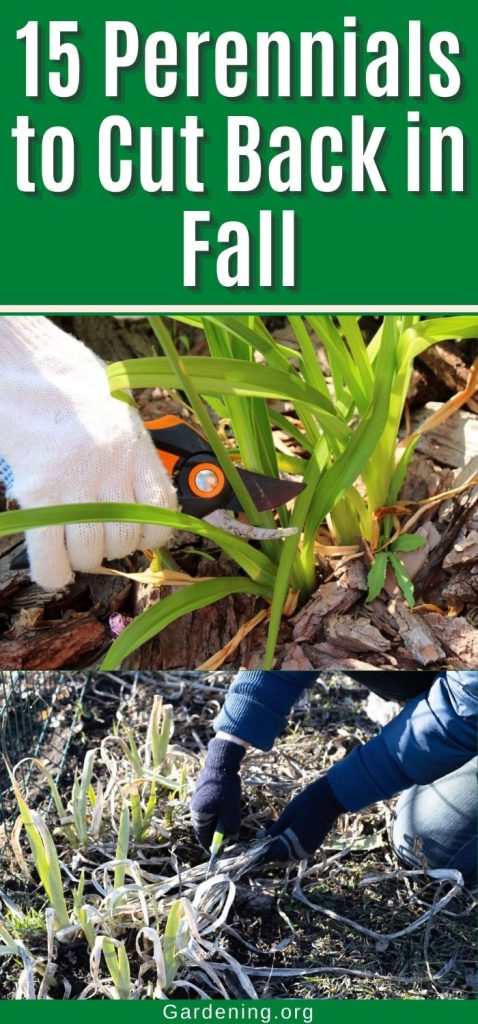
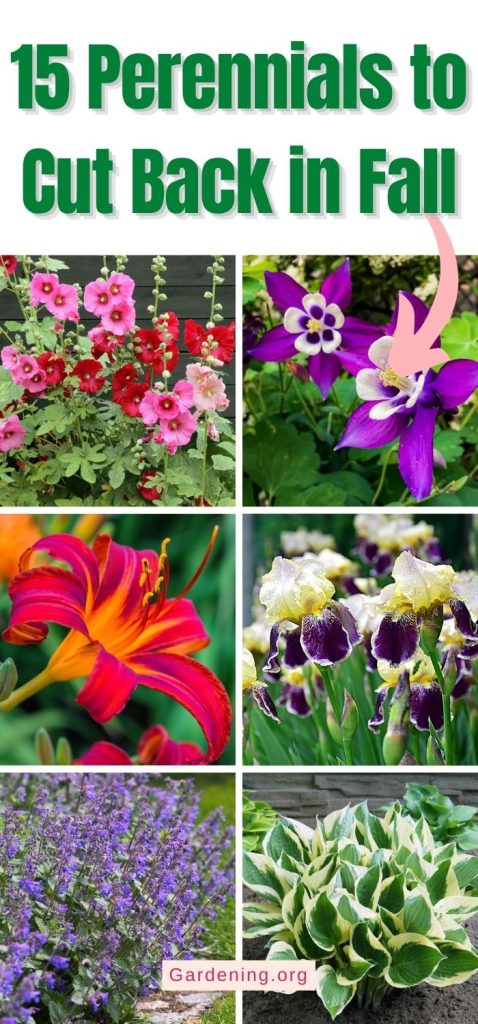

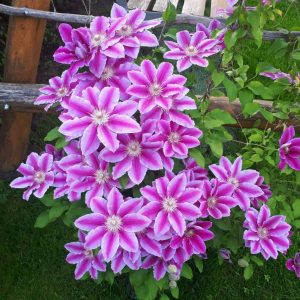
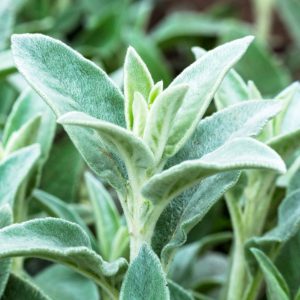


Peggy
Than you for these tips! Appreciated!
Charmaine Masters
Thanks for sharing all the wonderful information for us "beginner" gardeners!
Mary Ward
You're welcome! If there are other questions or topics you are interested in, please let us know.
Barbara Bonin
When and how should I prune my blue hydrangeas
Mary Ward
It depends on the type of hydrangea. You need to be careful with hydrangeas because some types set their buds in the fall and you might accidentally cut off next year's blooms. These two articles might help you:
https://gardening.org/hydrangeas-full-growing-guide/
https://gardening.org/fall-hydrangea-care-tips/
Catherine White
Great advice thankyou
Lucia
Hello thank you so much for these helpful tips
Any suggestions on cosmos?
Thank you
Carol Setcavage
Thanks for the information
Cheryl Foglio
What about hydrangeas? We cut them back in late fall. I have quite a few and every year some flower well, some get just a few flowers and some get no flowers. Is there something I should be adding to the soil to help get more of them to flower?
Mary Ward
You might start with finding out which type of hydrangea you have, especially if you are having flowering issues. The problem a lot of people have is that the next year's buds are set rather early and it's easy to cut them off or cut too close to them if you aren't careful, then you've cut off next year's buds. I've also recently come across some hybrids that say not to prune them for the maximum blooms.
You might find this helpful: https://extension.umn.edu/yard-and-garden-news/when-prune-hydrangeas-best-bloom
Jean
For 19 years now I have been fighting Bishops Weed which was on the back garden when I purchased this home. I inadvertently transferred some to the front garden years ago. I totally dug up the back garden 1 year ago and thought that all the roots were pulled. Some of the roots were 12 inches deep. It has returned. Any suggestions?
B. P.
The photo under “Lily“ is Iris domestica, common name is the blackberry lily, but it is not a true Lily. Your photo is a misrepresentation of the Lily family. It should be corrected. There are many hundreds of true Lilies, and a photo of any of them would have been much better than the one that was chosen.
Jeanne Mann
Much needed advice. Thank you very much
Madeline Vito
Thank you for my much needed information about cutting perennials in the fall or spring - fall being preferred. I am a somewhat new gardener so I appreciate all the help I can get. Thank you for being there and I look forward to any more helpful information you want to share.